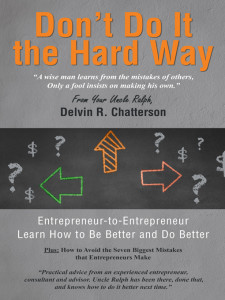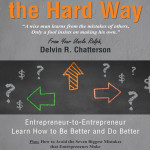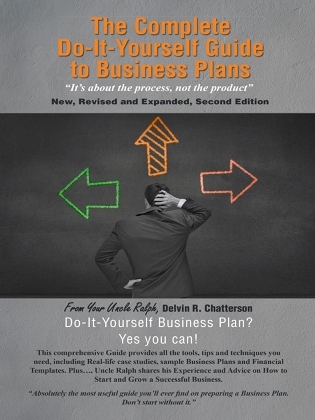Delvin R. Chatterson's Blog, page 11
September 6, 2016
Rory is back, or he never left?
Talent and hard work are hard to beat
 Within hours of a suggestion that Rory McIlroy was “at risk of no longer being part of the conversation”, he suddenly forced himself back onto the stage with a dramatic demonstration of world class performance and a win at the second round FedEx playoff in Boston on the weekend.
Within hours of a suggestion that Rory McIlroy was “at risk of no longer being part of the conversation”, he suddenly forced himself back onto the stage with a dramatic demonstration of world class performance and a win at the second round FedEx playoff in Boston on the weekend.
Struggling with months of erratic play and terrible putting, Rory had not had a PGA Tour win in 16 months and only the Irish Open win in May. After a nineteen months run at No.1 in World Golf Rankings, he had slipped to sixth and looked to be falling away from current No.1 Jason Day, and the challengers Jordan Spieth, Dustin Johnson and Henrik Stenson.
But Rory has been working hard on some mental adjustments and a new approach to putting that are suddenly starting to show results. He recovered quickly from a very bad first few holes on Friday and went 19-under-par on the next 68 holes to win by two strokes over Paul Casey and return to World No. 3 ranking.
So if you want to remain a world class competitor, keep working at getting better. And if you are currently No. 1, now is not the time to relax. There are tough champions coming up behind you who want it back.
Your Uncle Ralph, Del Chatterson
Read more articles like this one at : Business is Like Golf Blog
Friendly Competition Inspires Everybody
Stories behind the headlines
Match play: Beating one competitor at a time

Visit LearningEntrerpreneurship.com and join our mailing list for more ideas, information and inspiration for entrepreneurs.
Check out Uncle Ralph’s books, “Don’t Do It the Hard Way” and “The Complete Do-It-Yourself Guide to Business Plans” Available online or at your favourite bookstore in hard cover, paperback or e-book.
The post Rory is back, or he never left? appeared first on Learning Entrepreneurship.
September 1, 2016
Back to school, Not just for kids
 Not just for kids
Not just for kids It’s time for back to school, but once the kids are settled in it’s also a good time for you and your team to learn more and do better for yourselves and your business. Expand your knowledge or take a refresher in the fundamentals for better personal and business performance.
You probably have already established your preferred sources for ideas and inspiration, but consider expanding your horizons, dig a little deeper, try something new.
Go beyond scanning the Tweets and posts on Facebook or LinkedIn. Read your favourite guru’s latest book, or try somebody completely different. Take a course, hire a coach, or go to a conference or seminar outside your industry or profession. Maybe learn more about sociology, economics, political history or comparative religions to better understand what is going on in the world around us.
Share what you learn or coax others through the process. Become the teacher and be surprised by how much better you will understand the subject yourself.
Feel like a kid again, go back to school.
Enjoy!
Your Uncle Ralph, Del Chatterson
Read more at: Learning Entrepreneurship Blogs.
The Seven Biggest Mistakes and How to Avoid Them
Find the Exit before it’s an Emergency
When to Launch Your Business
The Four P’s of Salesmanship: “You wanna buy a book?”
Join our mailing list for more ideas, information and inspiration for entrepreneurs.
Click Here to check out Uncle Ralph’s books, “Don’t Do It the Hard Way” and “The Complete Do-It-Yourself Guide to Business Plans” Both are available online or at your favourite bookstore in hard cover, paperback or e-book.
The post Back to school, Not just for kids appeared first on Learning Entrepreneurship.
August 25, 2016
Let’s be reasonable
 You cannot win an argument by raising the volume.
You cannot win an argument by raising the volume.
It’s not because they cannot hear you that they are not buying it. You need to be more persuasive. They need to be more reasonable, or rational, or intelligent. Right?
Because they are clearly too emotional, ignorant or biased. Maybe. But thinking it and saying it out loud are both a mistake.
Stay calm. Listen and try not to react to the accusations that you are the one who is too emotional, ignorant or biased. Attacking the opponent’s character or explaining away objections are a sign of weak arguments. Dig a little deeper.
Where are the objections really coming from? Consider the point of view of your opponent (customer, prospect, boss or employee). Maybe they have valid input or questions that you had not considered. Maybe you are wrong and need to re-work your pitch.
If both sides are reasonable and ready to listen, you may actually both make progress.
Keep working on it.
Your Uncle Ralph, Del Chatterson
Read more at: Learning Entrepreneurship Blogs.
The Seven Biggest Mistakes and How to Avoid Them
Find the Exit before it’s an Emergency
When to Launch Your Business
The Four P’s of Salesmanship: “You wanna buy a book?”
Join our mailing list for more ideas, information and inspiration for entrepreneurs.
Click Here to check out Uncle Ralph’s books, “Don’t Do It the Hard Way” and “The Complete Do-It-Yourself Guide to Business Plans” Both are available
The post Let’s be reasonable appeared first on Learning Entrepreneurship.
August 18, 2016
Mistake #5: Neglecting key relationships – Employees First
This article is an extract from Uncle Ralph’s, “Don’t Do It the Hard Way”.
Mistake #5: Neglecting key relationships
Employees First
 Stan was leading the group today and started with, “OK, let’s start the discussion with a question. Which relationship is the most important key to success for any business?”
Stan was leading the group today and started with, “OK, let’s start the discussion with a question. Which relationship is the most important key to success for any business?”
“Customers, of course.” And it wasn’t just Larry with the obvious answer this time.
“OK, then which relationship can be the biggest obstacle to your success.”
“The bank”
“Employees”
“The government with all their regulations and reporting requirements”
“Suppliers, who don’t deliver as promised.”
Now we had some differences of opinion. So I interjected, “Can we all agree though, that we cannot keep our customers happy and coming back for more, if our employees don’t treat them well? And the best way to ensure that happens is to treat our employees the way we would like them to treat our customers. Isn’t it always obvious to the customer when the flight attendant, service technician or waitress is not happy with her job?”
“The best lesson I ever got was in Las Vegas (and it’s a story that should not stay in Vegas). We were at the annual computer conference and exhibition there (COMDEX) and my partners and I were having a long breakfast meeting in the Treasure Island Casino dining room. Long after breakfast we were still getting smiling and prompt service from the waiter with never-ending cups of coffee. We were there for so long that the shift changed, but we still had friendly, attentive service from the waitress who now was bringing the refills. Finally, after we had remarked on the service among ourselves, I said to her, ‘We have been coming to this conference in Vegas for many years and have met in many different dining rooms, but this is absolutely the best service we’ve ever had. How do you do it?’”
“She said, ‘The owner, Steve Wynn, treats us so well, we treat everybody well in return.’ Boom. She got it and the message stuck for me.”
“Great story, Uncle Ralph, and I agree,” said Brian, “but what if that well treated employee just doesn’t get it.”
“That happens. I remember a service technician telling me that his sharing in the monthly sales bonus made no difference to him; he still treated all the customers like idiots. Apparently we had made a hiring decision that was a mistake; so we asked him to leave and take his attitude elsewhere.”
“Recognizing and removing the misfits is a difficult but necessary part of people management. If employees do not buy into the corporate culture they will never be effective members of the team and need to be removed. Doing it well is important though, because all of your employees are watching and judging you as a manager.”
“When I was doing a survey to develop my list of the ‘The Seven Biggest Mistakes that Entrepreneurs Make’, one entrepreneur suggested it should include “Hiring too Fast and Firing too Slow.” He had a good point and it reminded me of the time I made both mistakes with the same employee! (More lessons learned.) And I know you want to hear that story, right?”
“Sure,” said Larry, “I find it reassuring to know you made so many mistakes and still survived!”
“Well, let’s just remember the old cliché, ‘What doesn’t kill you makes you stronger.’ Or as Bill Gates used to say at Microsoft, ‘In this business you have to recognize your mistakes quickly, before they get big enough to kill you.’ Most of the time I did fail fast and move on, ….
“But back to Bernie (not his real name, of course), and my mistake of hiring him too fast and firing him too slow. He was a sales rep with a bit of a mixed track record and some contradictory references – ‘great guy, good results, but hard to manage’. Of course, I thought I was a better manager than his previous bosses and I needed a sales rep, so signed him up. He did well for a few months, bringing some new customers with him and getting some big orders for us. But he was hard to keep track of and I started to notice his work habits were letting us down. Late for meetings or not showing up at all; refusing to make the extra effort if it interfered with his ‘personal’ time.”
“So after about a year, one more refusal to go out of his way for a customer caused me to sit him down and ‘counsel him out’. (That was the clumsy euphemism we used to use at Coopers and Lybrand to advise someone that their career plan would be better served somewhere else. Instead of delivering the very clear message, ‘You’re fired!’) Then I compounded my errors by trying to be kind and giving him some good referrals to other companies that might be hiring. That wasn’t doing him or his next employer any favours.
Immediately after he had left us, I started to learn from employees and customers that he was an even bigger problem than I thought; not only were his working relationships contentious with everyone, but he also had another business on the side that he was working at with his wife when he was supposed to be working for us. ‘What took you so long to let him go?’ was the common theme. ”
“So in terms of hiring, firing and managing performance, I learned to include other managers in the process and to be much more observant of who are the team players and who are not. Who get it and who do not. To recognize good or bad performance and to encourage feedback my guiding principle remains: “Praise in public; Punish in private,” even if it is never quite that simple.”
“Dealing with poor performance is only one of the challenges in managing employee relationships.”
“Recognizing and rewarding high performance employees is also a very important priority, even if they need less supervision and micro-management. They need to be engaged and developed to meet their own goals. You need them to act as if they are owners too – always working to promote the company and improve its performance, not just their own career plan. Mismanaging or neglecting high performers puts at risk the most important resource required to build value in your business.”
Avoid Mistake #5: Neglecting Key Relationships
Your Uncle Ralph, Del Chatterson
Read more at: Learning Entrepreneurship Blogs.
The Seven Biggest Mistakes and How to Avoid Them
Find the Exit before it’s an Emergency
When to Launch Your Business
The Four P’s of Salesmanship: “You wanna buy a book?”
Join our mailing list for more ideas, information and inspiration for entrepreneurs.
Click Here to check out Uncle Ralph’s books, “Don’t Do It the Hard Way” and “The Complete Do-It-Yourself Guide to Business Plans” Both are available online or at your favourite bookstore in hard cover, paperback or e-book.
The post Mistake #5: Neglecting key relationships – Employees First appeared first on Learning Entrepreneurship.
August 10, 2016
Excuses are easy
 “Too busy fighting fires to do fire prevention”
“Too busy fighting fires to do fire prevention”
“When you’re surrounded by alligators it’s hard to see a way out of the swamp.”
But there is no excuse for neglecting to manage the entrepreneur’s Challenge #1:
Balancing strategic leadership with management effectiveness.
The difference between management and strategy is the difference between engineering and philosophy.
Are you building a better solar-powered motorbike or are you developing more environmentally responsible recreation vehicles? Are you designing an appealing mobile app for grocery shopping or are you helping busy people manage their budgets better?
After you put out the next fire, or kick the next alligator away from your butt, look a little further ahead and find a safe place to build a better business.
Your Uncle Ralph, Del Chatterson
Read more at: Learning Entrepreneurship Blogs.
The Seven Biggest Mistakes and How to Avoid Them
Find the Exit before it’s an Emergency
When to Launch Your Business
The Four P’s of Salesmanship: “You wanna buy a book?”
Join our mailing list for more ideas, information and inspiration for entrepreneurs.
Click Here to check out Uncle Ralph’s books, “Don’t Do It the Hard Way” and “The Complete Do-It-Yourself Guide to Business Plans” Both are available online or at your favourite bookstore in hard cover, paperback or e-book.
The post Excuses are easy appeared first on Learning Entrepreneurship.
August 3, 2016
The Evolution of e-Business Challenges
This article is extracted from Uncle Ralph’s, “Don’t Do It the Hard Way“. Read the book.
The Evolution of e-Business Challenges
Good management principles still apply
 Early e-business challenges for small-business owners started with the arrival of e-mail and websites in the early 1990’s. Today we are trying to understand the implications of the rapidly expanding world of social media and mobile applications.
Early e-business challenges for small-business owners started with the arrival of e-mail and websites in the early 1990’s. Today we are trying to understand the implications of the rapidly expanding world of social media and mobile applications.
Perceptive entrepreneurs continuously ask: What does it mean for my business? Are competitors getting ahead of us? What are the risks of ignoring the new technologies? What are the new opportunities to be pursued?
In the early days, my advice for entrepreneurs was to turn the WWW upside down and remember the important principles of MMM: Management, Measurement and Marketing to successfully adopt new technologies. Every new initiative requires Management of the process, Measuring of results to monitor performance and effective Marketing to achieve visibility.
The internet and applications are continuously evolving and the online audience has grown from a few million to several billion around the globe over the past twenty years. But we still have the same challenges and questions.
The challenges remain the same: how to avoid the risks and seize the opportunities.
A successful e-business strategy requires sound management principles to be applied. First learn about the relevant technologies, then assess your justification for applying time and resources to adopting them. Do not start just because it’s cool, or your ego or your kids are pushing you. Or your competitors do it and your customers are asking about it.
It will be difficult and expensive, so be sure your initiative is justified by the expected impact on increasing sales, reducing costs, improving customer service, or enhancing competitive advantage. (Like every other business investment.)
Much has changed over the past twenty years, but the advice has not:
Your online initiatives must be an integral part of your business plan.
Thorough preparation and good project management are essential to meeting your objectives. .
Continuous monitoring of feedback and analytics will allow you to review, respond and revise your plans for improved results.
Start with a diagnostic of your current online performance, check the competitive environment and then come up with a plan to do better.
Don’t forget to enjoy the learning experience and prepare to cautiously avoid the risks and aggressively seize the opportunities.
Your Uncle Ralph, Del Chatterson
Read more at: Learning Entrepreneurship Blogs .
The Seven Biggest Mistakes and How to Avoid Them
Find the Exit before it’s an Emergency
When to Launch Your Business
The Four P’s of Salesmanship: “You wanna buy a book?”
Join our mailing list for more ideas, information and inspiration for entrepreneurs.
Click Here to check out Uncle Ralph’s books, “Don’t Do It the Hard Way” and “The Complete Do-It-Yourself Guide to Business Plans” Both are available online or at your favourite bookstore in hard cover, paperback or e-book.
The post The Evolution of e-Business Challenges appeared first on Learning Entrepreneurship.
July 20, 2016
Building loyal, long-term, profitable customer relationships
This article is an extract from Uncle Ralph’s, “Don’t Do It the Hard Way“. Read the book.
Building loyal, long-term, profitable customer relationships
Evolve through the customer experience
Goal: The primary objective of every business: building loyal, long-term, profitable customer relationships.
Process: It’s a three-part process of Marketing + Sales + Customer Service.
 It’s all about finding, attracting and retaining customers that bring value to the business in continuous profitable revenue and also become our biggest fans, telling everybody how wonderful we are. Sometimes we get so preoccupied with the hard work managing our marketing and sales efforts that we forget the essential strategic objective.
It’s all about finding, attracting and retaining customers that bring value to the business in continuous profitable revenue and also become our biggest fans, telling everybody how wonderful we are. Sometimes we get so preoccupied with the hard work managing our marketing and sales efforts that we forget the essential strategic objective.
The financial objective, of course, is to generate and grow sales revenue and profits. But to have sales you need customers. And to have sustained, profitable and growing sales, the best strategy is to develop loyal, long-term customer relationships.
So the marketing, sales and customer service activities must all be aligned to deliver a customer experience with your company and your brand that evolves from a first time buyer to a long-term customer. The marketing and sales efforts bring in the first order and then customer service has to deliver on the rest.
The customer experience with any business should evolve through four levels:
1. Satisfaction with price and availability
On the first exposure to your business, customers will quickly, maybe even subconsciously, compare price and availability to their expectations derived from prior experience with your competition. If this minimum expectation is not met, there will likely be no sale and maybe no second chance.
2. Recognition of superior service levels
The first point of differentiation and the first step to building a stronger customer relationship will be when the customer recognizes that you offer superior service. You can demonstrate it in many ways – more stock, better delivery, easier payment terms, faster response to inquiries or better warranty service and support. Any one of these may be sufficient for you to stand out from the competition and deliver a satisfied customer.
3. Appreciation of the value of your knowledge and experience
After the basic needs of price and availability are met and you have distinguished yourself with superior service, the customer experience should then lead to an appreciation of the added value of your knowledge and experience. This will be demonstrated by your staff having the product knowledge, training, education and experience to help customers make better purchasing decisions. Now you are building a relationship valued by the customer.
4. Connection on values, mission and vision
The final step in cementing loyal, long-term relationships will occur when the customer recognizes a common sense of values, mission and vision in the way you both do business. This connection will be developed over several interactions, particularly when problems are solved together, or you connect on issues not directly related to the buy-sell transaction like honesty and integrity, social values or environmental issues.
The sooner you can meet customer expectations at all four levels, the faster you will build lasting and loyal customer relationships. And that is the primary objective of every business, right?
Your Uncle Ralph, Del Chatterson
Read more at: Learning Entrepreneurship Blogs .
The Seven Biggest Mistakes and How to Avoid Them
Find the Exit before it’s an Emergency
When to Launch Your Business
The Four P’s of Salesmanship: “You wanna buy a book?”
Join our mailing list for more ideas, information and inspiration for entrepreneurs.
Click Here to check out Uncle Ralph’s books, “Don’t Do It the Hard Way” and “The Complete Do-It-Yourself Guide to Business Plans” Both are available online or at your favourite bookstore in hard cover, paperback or e-book.
The post Building loyal, long-term, profitable customer relationships appeared first on Learning Entrepreneurship.
July 19, 2016
Marketing, Sales or Customer Service?
This article is an extract from Uncle Ralph’s, “Don’t Do It the Hard Way“. Read the book.
Marketing, Sales or Customer Service?
Are choices to be made? Do we need to deliver on all three?
 “First let’s define better the three elements of this process to build long-term valuable customer relationships:
“First let’s define better the three elements of this process to build long-term valuable customer relationships:
Marketing – understanding the market and defining the target customer; building awareness, interest, and attraction; and, identifying prospects.
Sales – converting interested prospects into qualified, buying customers.
Customer service – delivering products and services as promised to ensure that each customer is a satisfied, repeat customer.
Each step has to be done consistently well for the results to be achieved. But a choice still has to be made – which element are you going to be best at? Will you win from competitors on marketing, sales, or customer service? You cannot be best at all three.
In my experience managing a second-tier brand name in computer hardware, we knew that we couldn’t possibly out-market the multinationals, but we could out-sell them, one customer at a time. We spent a minimum of time and effort on marketing. Respecting basic principles of clear and consistent messaging and being creative at avoiding large expenditures worked for us.
Winning on customer service was also a challenge – it’s expensive for any manufacturer to compete on warranty terms and technical support.
So we went back to salesmanship, even in the service department – coaching staff on persuading the customer to be reasonable, patient, and give us another order, please! We carefully explained to our service technicians that the best result from a call for tech support was to turn a complaint into a compliment and then pass the call to a sales rep for another order.
You can achieve success by being selective, instead of trying to be good at everything.
So take a look at your strategic positioning, your performance and your options in marketing, sales and customer service – then choose, focus and build one of them into your competitive weapon.”
Your Uncle Ralph, Del Chatterson
Read more at: Learning Entrepreneurship Blogs .
The Seven Biggest Mistakes and How to Avoid Them
Find the Exit before it’s an Emergency
When to Launch Your Business
The Four P’s of Salesmanship: “You wanna buy a book?”
Join our mailing list for more ideas, information and inspiration for entrepreneurs.
Click Here to check out Uncle Ralph’s books, “Don’t Do It the Hard Way” and “The Complete Do-It-Yourself Guide to Business Plans” Both are available online or at your favourite bookstore in hard cover, paperback or e-book.
The post Marketing, Sales or Customer Service? appeared first on Learning Entrepreneurship.
July 14, 2016
In defense of Business Plans
Read the full article and watch the video here.
Your Uncle Ralph, Del Chatterson
Read more Learning Entrepreneurship Blogs.
The Seven Biggest Mistakes and How to Avoid Them

Find the Exit before it’s an Emergency
When to Launch Your Business
The Four P’s of Salesmanship: “You wanna buy a book?”
Join our mailing list for more ideas, information and inspiration for entrepreneurs.
Click Here to check out Uncle Ralph’s books, “Don’t Do It the Hard Way” and “The Complete Do-It-Yourself Guide to Business Plans” Both are available online or at your favourite bookstore in hard cover, paperback or e-book.
The post In defense of Business Plans appeared first on Learning Entrepreneurship.
July 12, 2016
Consultants: How to Choose, Use, and Not Abuse them
This article is an extract from Uncle Ralph’s, “Don’t Do It the Hard Way“. Read the book.
Consultants: How to Choose, Use, and Not Abuse them
Help them, help you
 Since doing my first consulting project over thirty years ago, I have learned a lot about how to successfully manage consulting projects and the client/consultant relationship.
Since doing my first consulting project over thirty years ago, I have learned a lot about how to successfully manage consulting projects and the client/consultant relationship.
Here are some ideas that may help you with your consultants (and your lawyers, accountants and other professionals):
Before you introduce consultants to the process, be sure you need what you want and want what you need. Beware of consultants that agree to do whatever you want, whether you need it or not.
Look internally to confirm the three “C’s” of consulting project readiness: Capacity in budget, time and resources; Commitment of management and staff affected by the process; and Capability to support the project and implement the conclusions.
One more “C” – Compatibility. Select your consultants from an organisation that is compatible with yours – are you a corporate multinational or a local entrepreneurial business?
Recognize whether your consulting needs are strategic: requiring outside expertise to inspire and facilitate your business planning process, or operational: bringing knowledge, skills and experience that are not available internally.
Meet the operating consultant. It may not be the same charming, talented person that sold you the work. And at those fee rates you don’t want to train a recent MBA, who started last week and studied your industry yesterday.
Test Drive: Check whether the consultant arrives with questions, not answers; will operate as neither boss nor employee; and will win the hearts and minds of your staff. Successful consultants will listen, understand, empathize, analyze, strategize and persuade better than normal people.
Remember you are hiring a consultant to challenge and push you. You are not renting a friend to tell you how smart you are.
Can you confidently expect a solution that will be yours not theirs?
Ask for references. Call them.
Ask who is not on the reference list and why not. Learn what they think causes a project to be unsuccessful. And ask which list they expect you to be on when this is over.
Ask for fee rates and a work plan with estimated hours. Then agree on a fixed fee for agreed deliverables with dates, documents and milestones.
Don’t let their progress reports interfere with your progress. Get what you need, not what they need for “CYA” requirements.
Check who else is billing time to your project. Sometimes there is a very expensive partner back at the office who needs to keep his billing rate up. Your budget can be quickly consumed while he “supervises” from a distance.
Avoid surprises. Ask about additional expenses: travel, telephone and printing. Terms of payment?
Do they have a satisfaction guarantee?
Get the agreement in writing, read it before signing it.
Watch for signs of trouble: such as, selling more work before the work is done; long delays between on-site visits; too much time spent “back at the office” and billed to you.
And finally, remember consultants are people too. They want to boast about good work and satisfied clients. You can help them help you. Don’t be difficult.
With all due respect and best regards to my favourite clients and consulting associates.
Your Uncle Ralph, Del Chatterson
Read more at: Learning Entrepreneurship Blogs .
The Seven Biggest Mistakes and How to Avoid Them
Find the Exit before it’s an Emergency
When to Launch Your Business
The Four P’s of Salesmanship: “You wanna buy a book?”
Join our mailing list for more ideas, information and inspiration for entrepreneurs.
Click Here to check out Uncle Ralph’s books, “Don’t Do It the Hard Way” and “The Complete Do-It-Yourself Guide to Business Plans” Both are available online or at your favourite bookstore in hard cover, paperback or e-book.
The post Consultants: How to Choose, Use, and Not Abuse them appeared first on Learning Entrepreneurship.



